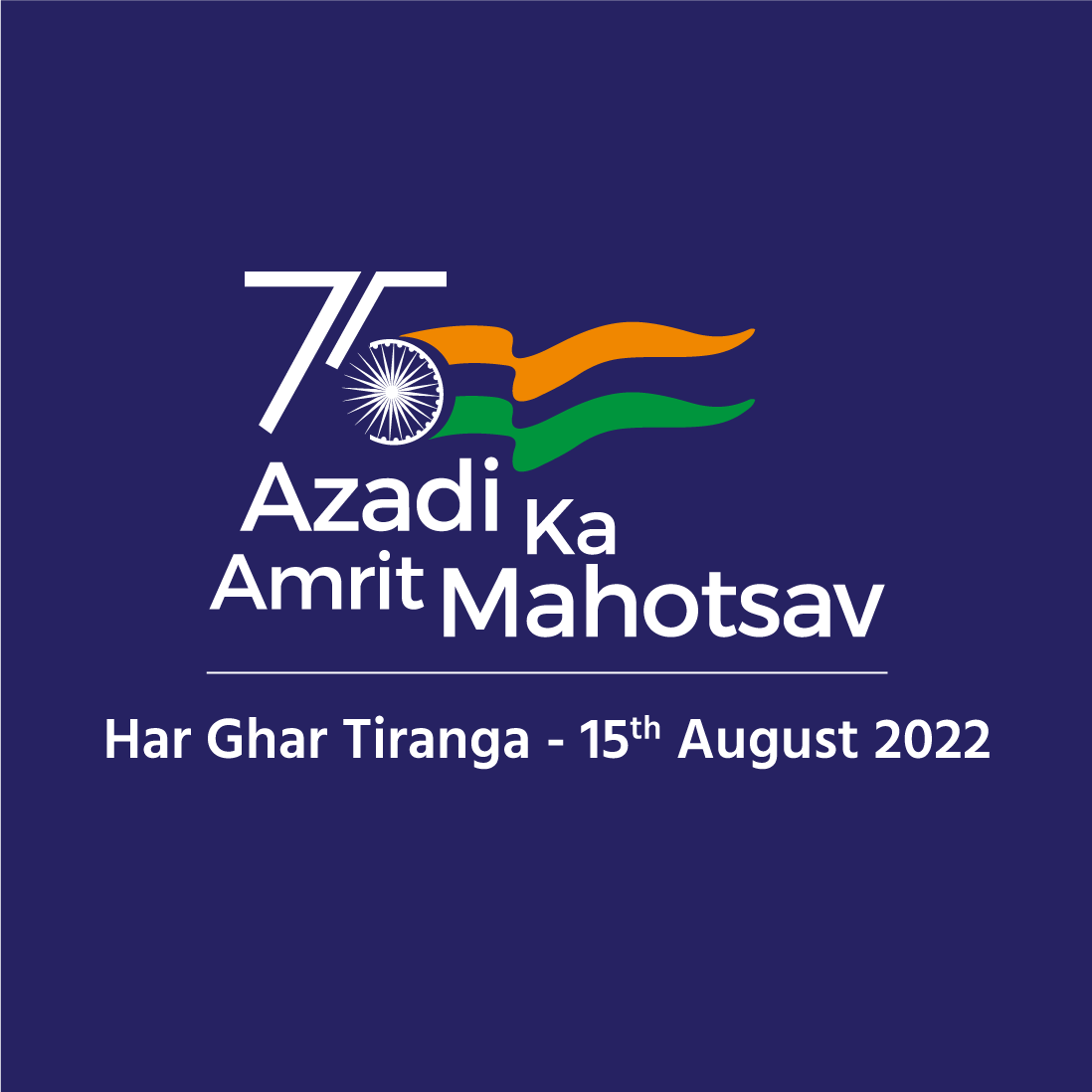
Indian Council of World Affairs
Sapru House, New DelhiTwenty Years of Quad: Building Cooperation in the Indo-Pacific
The Quadrilateral Security Dialogue (Quad), a strategic grouping comprising Australia, Japan, India and the United States, celebrated its 20th anniversary in December last year. The joint statement released by the Quad Foreign Ministers commemorating the event stated, “What began as an emergency response to a catastrophe has grown into a full-fledged partnership delivering positive outcomes for the people of our region.”[i] The partnership, formed in response to the 2004 tsunami, has grown to become a reliable means of cooperation and diplomacy for the four nations and their partners. The close coordination between the four led Japan to propose the idea to strengthen this coordination and resulted in the genesis of a quadrilateral dialogue. In 2007, the group held its inaugural, albeit informal, first meeting on the sidelines of the ASEAN Regional Forum in Manila, the Philippines. However, the lack of clarity on areas of cooperation, differing foreign policy goals and national interests, along with a change in governments, led to a suspension of the group’s activities.
The Quad returned from its hiatus in 2017. While then-Prime Minister Abe was instrumental in its revival, there was considerable acknowledgement of the need for more cooperation to address shared concerns. India outlined its vision for “…advancing cooperation in the Indian Ocean Region … (and) deepening economic and security cooperation…”[ii] through its Security and Growth for All in the Region initiative and outlined “… the need to develop a free, open, secure and prosperous Indo-Pacific ...,” which is an inclusive region[iii]. Australia[iv] and the United States[v], have also made engagements in the Indo-Pacific region a top priority and called for active and determined diplomacy and strong partnerships to help advance a secure and prosperous Indo-Pacific and strengthen the rules-based international order. As the interests of the four nations converged, the Quad became a natural base for renewed interaction. The fact that since 2021 the Quad Heads of Government have been meeting on a regular basis indicates the importance that the grouping has come to occupy in the policymaking of the four nations. As the Quad grows and expands its agenda, this paper outlines the drivers of the Quad agenda, its success and the challenges it encounters.
The Quad Initiatives: Building Partnerships in the Indo-Pacific
The Quad has shaped its agenda to be able to harness the collective strengths and resources of the four members, ranging from government-to-government partnerships to increased engagements between the private sector and also people-to-people contacts to support regional development, security and stability. These includes discussions through inter-parliamentary exchanges, the development of the Quad investors network, working together on technology innovations such as to support secure and enhanced telecommunication across the region through OpenRAN[vi] to working together to harness AI technologies. The Quad is engaged in discussion on supply chains networks and development of the semiconductor industry that will drive future economies. The countries are also building ties between their people especially the youth through exchanges programmes such as International Visitor Leadership Program (IVLP) and other exchanges, on topics related to cyber security, workforce development for critical and emerging technologies. There are also various Quad fellowship programmes that support student exchange including encouraging women to participate in STEM research.
It needs to be pointed out that, while the Quad members have concerns with respect to the aggressive posturing by China, the Quad is not limited to just counterbalancing China. While three members are alliance partners, India’s presence has ensured that the Quad moves beyond just dialogue on security issues to becoming an alternative avenue for growth and development within the region. As pointed above, the Quad’s agenda is being shaped by its belief in building strong networks of mutually beneficial coalitions, which will build an inclusive security architecture where all partners are linked. This has made the Quad the most acceptable forum for discussion on the Indo-Pacific.
The informal setting of the grouping has allowed the four nations to make their contributions towards the evolution of the Quad’s agenda. This flexibility in agenda development has allowed the Quad to engage with different partners on different issues with the broader aim of strengthening regional partnerships. This adds to its desire to build interlinked security architecture, as mentioned before. The flexibility has allowed the Quad to value ASEAN centrality to the Indo-Pacific while also allowing Australia and the United States to pursue military alliances with the United Kingdom. This is at a time when India and Japan are collaborating on various fronts, including defence, security, trade, investments and technology bilaterally and with other partners in the region. The ability of the Quad members to work with regional nations to build issue-based partnerships has also helped the Quad emerge as a preeminent group in the region. If it can continue to deliver on its commitments, it will be seen as a viable alternative to China’s partnership initiatives.
The Quad Initiatives
The Quad has launched initiatives that reflect the wide agenda, from cooperation critical and emerging technologies to space cooperation. If one is to focus on the Quad’s security agenda it highlights the maritime domain features of the Indo-Pacific region. In 2024, the Biden Administration announced that Coast Guards of the Quad members will spend time on board a U.S. Coast Guard vessel operating in the Indo-Pacific to launch the first-ever Quad-at-Sea Ship Observer Mission in 2025 to improve interoperability[vii]. With each member taking turns to become the host. The grouping also conducts the Quad HADR exercise to prepare for potential future disasters in the region. Quad governments are working to ensure readiness to rapidly respond, including through pre-positioning of essential relief supplies, in the event of a natural disaster; this effort extends from the Indian Ocean region, to Southeast Asia, to the Pacific.[viii]
The Indo-Pacific Partnership for Maritime Domain Awareness (IPMDA) launched in 2022 by the Quad, provides partners with near-real-time, cost-effective, cutting-edge radio frequency data, enabling them to better monitor their waters; counter illegal, unreported, and unregulated fishing; respond to climate change and natural disasters; and enforce their laws within their waters.[ix] In its 2024 Foreign Ministers’ Meeting Joint Statement the Quad’s intent to launch the Quad Maritime Legal Dialogue under the Quad Maritime Security Working Group was announced. The Dialogue is to focus on “…expertise on international law of the sea issues in support of (the Quad’s) efforts to uphold the rules-based maritime order in the Indo-Pacific.”[x] Aware of the asymmetry in capabilities within the region the Quad is also extending cooperation on all these important issues to regional partners.
Recognising the need for cooperation to address broader global challenges, and building public goods for the Indo-Pacific, as well as for the international community, is driving the Quad agenda in the present day. Through its six working groups[xi], the Quad is working to strengthen cooperation among the four Members States across a range of issues. Learning from its experience, it is also partnering with regional nations on these issues. For example, building on its successful partnership during the COVID-19 pandemic, the Quad has launched the Quad Cancer Moonshot to collaborate with partner nations to reduce the burden of cancer in the region. The Quad Ports of the Future Partnership, will harness the Quad’s expertise to support sustainable and resilient port infrastructure development across the Indo-Pacific, in collaboration with regional partners. Born in the wake of the 2004 tsunami, the Quad has continued supporting humanitarian and disaster relief mechanisms while working with partners to build on early warning and crisis preparedness and promoting standard operating procedures which enable an effective, immediate and coordinated response mechanism with regional partners.
Quad’s Outreach
The Quad’s joint statement and vision statements have outlined the need to work with regional organisations such as ASEAN, Pacific Islands Forum (PIF) and the Indian Ocean Rim Association (IORA). The Quad has committed to the helping support communication cable connectivity in the Pacific Islands. The sectors in which the Quad is looking to engage with these organisations are green shipping and port development, resilient infrastructure development, enhanced digital connectivity, climate action and maritime security.
Besides regional partners, the Indo-Pacific is important for other nations beyond the region. As an increasing number of countries invest in the Indo-Pacific, it is becoming imperative that they not only make their presence felt in the waters of the region but also engage and support regional partners. As mentioned, the Quad is working closely with the ASEAN to realise the goals of the ASEAN Outlook to the Indo-Pacific. The Quad is also building new partnerships with Asia and Europe through the Quad Plus approach. The most visible example of this has been the engagement with South Korea in a range of areas such as critical technologies, maritime security, infrastructure development and vaccine manufacturing by bringing South Korean expertise to push forward the Quad agenda. Similarly European countries are also engaged with the Quad. Since 2020, France holds annual trilateral dialogue with Australia and India, focussed on the Indo-Pacific and routinely takes part in joint exercises with the Quad members. Germany and the Netherlands are also making their presence in the region through limited interactions.
The most prominent advantage of the Quad is that it is not a military alliance but is focused on generating gradual convergences of cooperation, allowing like-minded nations outside the grouping to partner with it to voice regional concerns and address mutual challenges.
Challenges on the Road Ahead
The Quad has emerged as an important pillar of Indo-Pacific regional architecture. It has undergone crucial evolution. It has grown from meetings of working level officials to Foreign Ministers and now Heads of Governments. The Quad members are also increasing their alignments on issues and expanding their network to other regional partners. Nonetheless, as the Quad expands its activities it would face some challenges in the near future.
As pointed, the informal nature of the Quad structure has been an advantage in agenda development but it also has drawbacks. As it is a diplomatic partnership, the vast majority of its interactions are through meetings held between Heads of Government, Foreign Ministers and Senior Officials. It has meant that the members have to continuously work to build alignments in broader policy outlooks, as differences in interests and priorities remain despite the partners’ shared interests. The lack of formal institutional mechanisms poses a challenge in the implementation of the Quad’s substantive agenda. This also means that it has to ensure that the policymakers and bureaucracies in the four countries make continued efforts to improve coordination among them. With Member States having differing levels of staff and resources committed to the various issues, this may be a challenge for the Quad as it grows. The grouping’s future agenda development will depend on its ability to marshal its structures and processes to deliver meaningful benefits in the Indo-Pacific.
A second issue that faces the grouping is questions on its expansion. Expansion is not a necessity if the Quad is able to build robust partnerships. A core set of countries can in principle, drive a hub and spokes like organisation. However, geopolitical dynamics can call for a different approach in the future. Nonetheless, for the moment, the group has outlined no plans for expansion.
As the Quad looks at the future, it finds itself looking at a complex international arena where emerging technologies such as drones and AI are changing how threats are viewed. With this evolving security and threat landscape the Quad will also have to take into consideration these developments as it outlines policy guidelines to look at these developments.
A continuous challenge for the Quad would be to counter the Chinese narrative on the grouping. Never positive, China’s views on the Quad have shifted from dismissive to calling it an exclusive bloc which is a threat to the peace and stability of the region. With the countries of the region sharing historically deep political and economic relations with China, they do not want to choose between the United States which remains a major security provider and China, an economic partner. As the Quad gains strength, it will be increasingly seen by China as part of the broader security and political challenges it faces in the international arena. This would mean that the Quad has to be ready to face the political attacks and Beijing’s economic push into the region. The consolidation of the Quad may further increase Chinese military spending which is another area where the Quad has to be mindful of the region’s wariness to the increasing China-U.S. competition.
Conclusion
The grouping has undergone a transformation in the past two decades, evolving from a group of countries coming together in response to a natural disaster to one that is now a coalition driving diplomatic and strategic initiatives. The grouping has not only expanded the range of activities but has also come to play a central role in regional diplomacy and has become a barometer for the interest shown by the United States and its allies to the Indo-Pacific. As the global geopolitical dynamics evolve, the Indo-Pacific faces a complex array of challenges. The Quad’s collaborative framework has the potential to provide security and prosperity in the region. For this, the Quad has continued to reassess and evolve its scope and principal objectives.
The Quad is demonstrating its commitment to addressing multifaceted challenges and promoting inclusive growth and development within the Indo-Pacific region. It is expanding its agenda with a view to the evolving needs of the member States and partner nations. The Quad has been able to build a lot of traction within a short time; the challenge now is to manage the expectations across domains, such as defence, and infrastructure development. The examination of its strengths and weaknesses and exploring new vistas of collaboration will be essential for the growth of the grouping. The strength of the Quad lies in the commitment of the four member States that bring diverse capabilities to the grouping and ensure that the groupings’ core values resonate with partner nations within the Indo-Pacific and beyond.
*****
*Dr. Stuti Banerjee is a Senior Research Fellow with ICWA.
Disclaimer: The views expressed are personal.
Endnotes
[i] Ministry of External Affairs, Government of India, “Joint Statement from the Quad Foreign Ministers Commemorating the 20th Anniversary of Quad Cooperation, December 31, 2024,” https://www.mea.gov.in/press-releases.htm?dtl/38875/Joint_Statement_from_the_Quad_Foreign_Ministers_Commemorating_the_20th_Anniversary_of_Quad_Cooperation, Accessed on January 03, 2025.
[ii] Press Information Bureau, Government of India, Prime Minister's Office, “Text of the PM's Remarks on the Commissioning of Coast Ship Barracuda, 121 March 2015,” https://pib.gov.in/newsite/printrelease.aspx?relid=116881, Accessed on January 06, 2025.
[iii] Ministry of External Affairs, Government of India, “Prime Minister’s Keynote Address at Shangri La Dialogue,” June 01, 2018). https://www.mea.gov.in/SpeechesStatements.htm?dtl/29943/Prime+Ministers+Keynote+Address+at+Shangri+La+Dialogue+June+01+2018, Accessed December 31, 2024.
[iv] Australian Government, “2017 Foreign Policy White Paper,” https://www.dfat.gov.au/sites/default/files/2017-foreign-policy-white-paper.pdf, Accessed on December 31, 2024.
[v] U.S. Department of State, “A Free And Open Indo-Pacific: Advancing a Shared Vision,” https://www.state.gov/wp-content/uploads/2019/11/Free-and-Open-Indo-Pacific-4Nov2019.pdf, Accessed on December 31, 2024.
[vi] The Radio Access Network (RAN) provides the last-mile connectivity for mobile networks and includes a network of cell towers (or base stations) and other equipment that transmit and receive radio signals to provide wireless coverage. The Open Radio Access Network (RAN) defines standardised interfaces that make components from different vendors work together. It is making telecommunication networks more open, flexible, and innovative. It allows different vendors to work together, encouraging competition, driving new ideas, and creating smarter, more efficient networks.
[vii] The White House, “Fact Sheet: 2024 Quad Leaders’ Summit 21 September 2024,” https://www.whitehouse.gov/briefing-room/statements-releases/2024/09/21/fact-sheet-2024-quad-leaders-summit/, Accessed on 17 January 2025.
[viii] The White House, “The Wilmington Declaration Joint Statement from the Leaders of Australia, India, Japan, and the United States, 21 September 2024,” https://www.whitehouse.gov/briefing-room/statements-releases/2024/09/21/the-wilmington-declaration-joint-statement-from-the-leaders-of-australia-india-japan-and-the-united-states/, Accessed on 17 January 2024
[ix] Ibid. The White House, “Fact Sheet: 2024 Quad Leaders’ Summit 21 September 2024,” https://www.whitehouse.gov/briefing-room/statements-releases/2024/09/21/fact-sheet-2024-quad-leaders-summit/, Accessed on 17 janaury 2025.
[x] Minsitry of External Affairs, Government of India, “Quad Foreign Ministers’ Meeting Joint Statement, 29 July 2024,” https://www.mea.gov.in/bilateral-documents.htm?dtl/38044/Quad+Foreign+Ministers+Meeting+Joint+Statement, Accessed on 14 January 2025
[xi] The six leader-level working groups are on: (i) COVID-19 Response and Global Health Security, (ii) Climate, (iii) Critical and Emerging Technologies, (iv) Cyber, (v) Space and (vi) Infrastructure.















